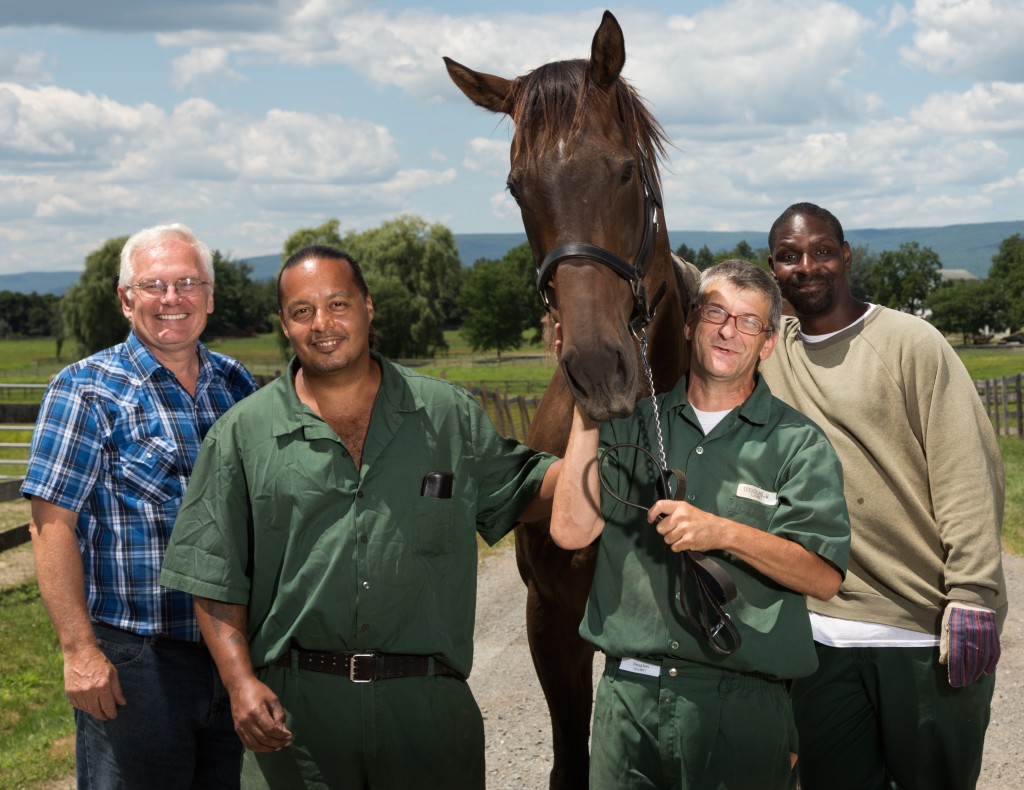
The Thoroughbred Retirement Foundation’s Jim Tremper, left, has taught inmates to care for Thoroughbreds since 1984. Photos by Michael Bloom
It was a crazy idea.
Teaching prison inmates to care for Thoroughbred ex-racehorses in a rehabilitative setting that provided care for unwanted horses, while at the same time instilling a new lease on life for the inmates, seemed a bit far-fetched to Jim Tremper.
So when a friend suggested that Tremper apply for a new position at the Wallkill Correctional Facility in New York, where the Thoroughbred Retirement Foundation (TRF) was preparing to launch its flagship Second Chances program, he recoiled— a little.
“At the time I remember thinking I didn’t want to work at a prison,” he said. “And my friend said to me, ‘Yeah, yeah, you’d be perfect for it.’ ”
It turned out the friend was right.
In 1984, after working 16 years in the horse world, Tremper left his position at a Thoroughbred breeding farm to take a leap of faith with the TRF.
And all these years later, after dozens and dozens of inmates and racehorses have passed through the barns at Wallkill, Tremper reflects back on the flagship program that has since spread to nine states, and changed many, many lives in the process.
In this week’s Clubhouse Q&A, Tremper reflects on the crazy idea that turned out to be not so crazy after all.
Q: What was your first order of business at Wallkill?
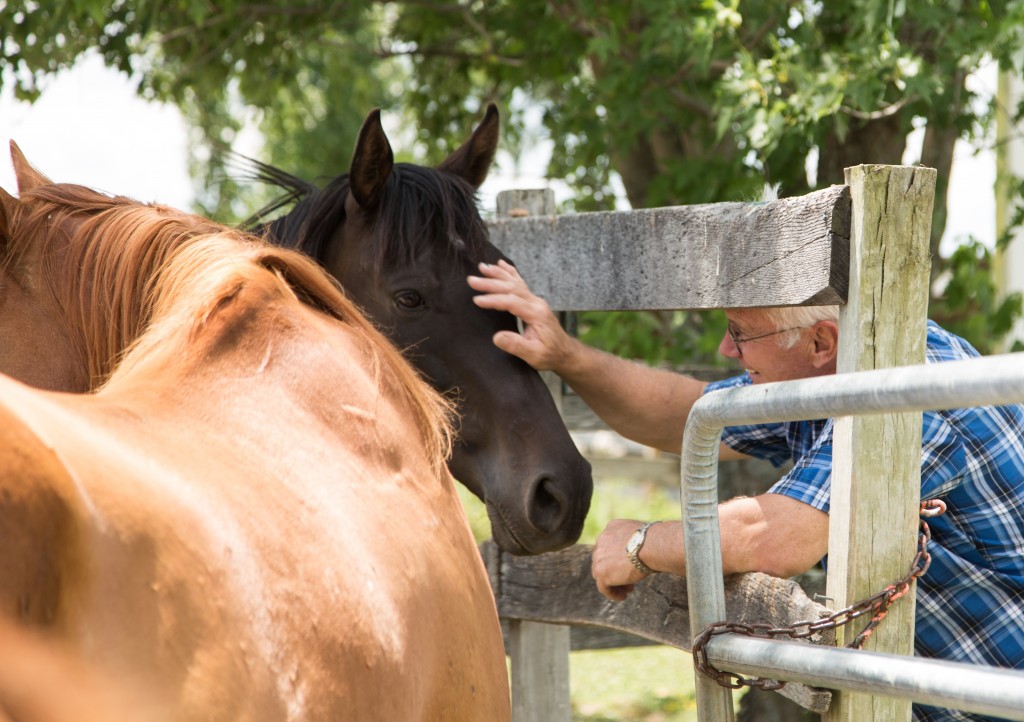
Tremper checks on one of the 53 Thoroughbreds under his care at the Wallkill Correctional Facility in NY.
The first thing we had to do was convert an old dairy farm to a horse farm. We had to get rid of all the barbed wire and redo the fencing, which was in disrepair. We pulled it all down and put up wood fencing. The inmates did almost all of the work, but the officers themselves helped a lot too. The officers were outstanding, working side-by-side with the inmates to put up that fencing.
It was a slow process. We started with a tractor shed and put six stalls in it. And then we built small paddocks. And on Christmas 1984, we took our first six horses. By February, we were up to 10 horses.
Q: Then came the introductions between inmates and horses.
This was a big surprise. I definitely didn’t expect to see enthusiasm with the inmates. I anticipated a certain reticence, and doubted their willingness to interact with animals.
But starting with that first group, they just really dug into it; they wanted to tear down the old fencing, jackhammer the concrete out of the old dairy farm, and though attitudes didn’t change overnight, they did change. Many inmates have this egocentrism that has run their lives. Working with the animals, it disappears, and they develop a purpose to their lives they didn’t have before.
Q: What was one of the most profound changes you witnessed in an inmate?
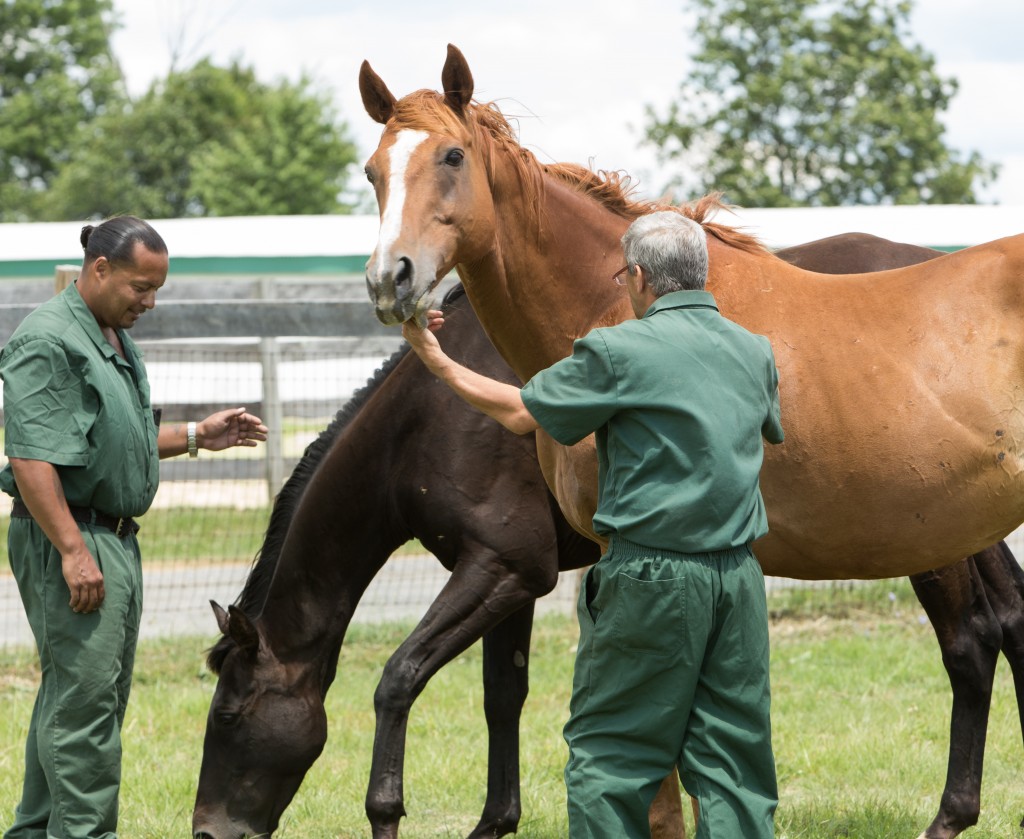
Learning to become a leader of a herd of horses has been life changing for many inmates at the Wallkill Correctional Facility.
I had one guy who was a heroin addict. He could never hold down a job; his parents let him live with them. He went to the grocery store for them, and in return they let him live there. He’d get just enough money together to buy his next fix.
He started caring for Stagedoor Dandy, who needed extra care, food, grooming. After working with the horses, his whole way of carrying himself changed. He’s been out for four years now, and is holding down a union job. He calls me every six or eight months to say hi and tell me how he’s doing.
Then I had another one who was a real SOB. He’d been in trouble all his life, been in hundreds of fights, and his face was all scarred up. This was a long time ago, when we had guys with more violent histories, and our deputy superintendent remembered working with him at Sing Sing.
So one day our deputy said to him, ‘Charles, we’re going to put you with horses.’ And Charles said, ‘I don’t want to work with horses!’ But the deputy told him to give it a try; it might lead to an early release.
When he first started. This guy didn’t want to work with anybody, talk with anybody; his whole demeanor was all about negativity.
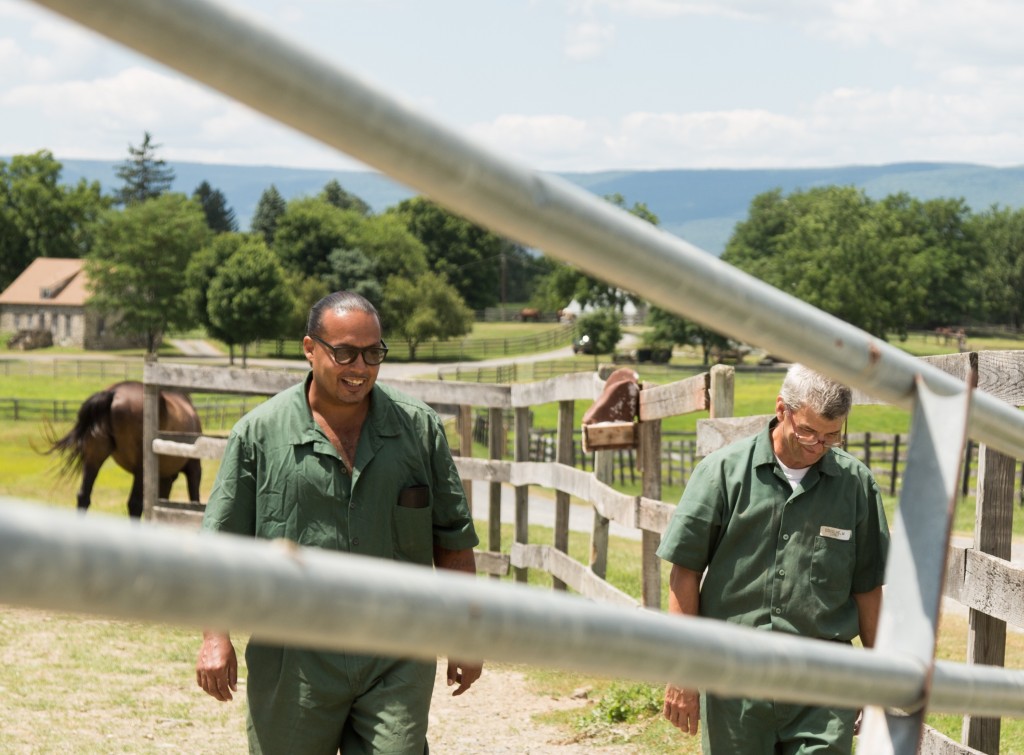
Inmates enjoy getting outside to work and commune with nature.
I gave him two horses and I told him he was going to be the alpha in their herd. I explained it didn’t mean he was going to bully them. He never said a word. He started feeding them. I taught him to groom. And the horses taught him to be quieter and gentler.
After nine months, this same inmate was talking to people, asking for help from other inmates, and he became socialized. He went on to get a job outside of prison as a drug counselor.
Q: How do you help the men who are secretly afraid of horses?
Very recently we had a crack addict. All he wanted to do was get high. Two of his three children had been or are in jail. With a person like this, you wonder how anybody can be that messed up or self-absorbed.
When this individual came out here, he was not a bad worker, but he was scared of horses, and scared of most of the other guys. He was like a lot of the men who have a façade, and don’t want to let anybody know they’re scared. He’d been in the service. But, he was just really scared of the horses.
I knew this because the horses told me. All I did was watch the interaction between the horses and the inmates. For instance, when someone went out to feed horses, if the horses mowed the guy over or ran them down, I knew.
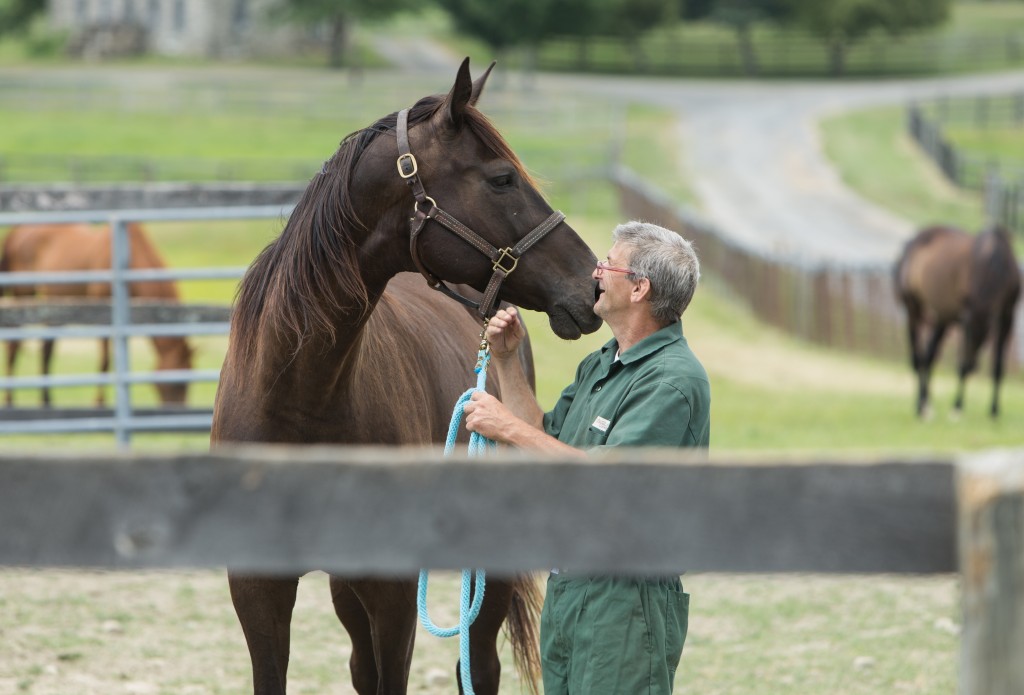
Horses have helped men cope with anger and addiction, according to Tremper.
With the crack addict, I took him aside and explained that the only reason they’re running him down is because he’s telling them it’s OK. I told him he had to carry himself in a way that let them know he was confident. Because if you’re acting scared, the horse thinks there’s something out there that’s going to eat both of them.
To a horse, a caretaker is like the sentry in the herd. They look to that person to tell them if there’s something out there to be afraid of. If you act afraid, then they’re afraid.
When I explained this, it was like the light came on. And he said, ‘Oh yeah, I get it.’ He did eventually get it, where he started getting really good with the horses. He was here in the program for a year and a half.
Now his life’s mission is to stay clean and work with the horses. He calls me every two weeks.
Q: Who among the herd of horses was a strong teacher?
Three Fires was our third horse to arrive at Wallkill, and if an inmate got aggressive with him, he’d take care of business pretty quickly. He’d either push the inmate, or sometimes kick him.
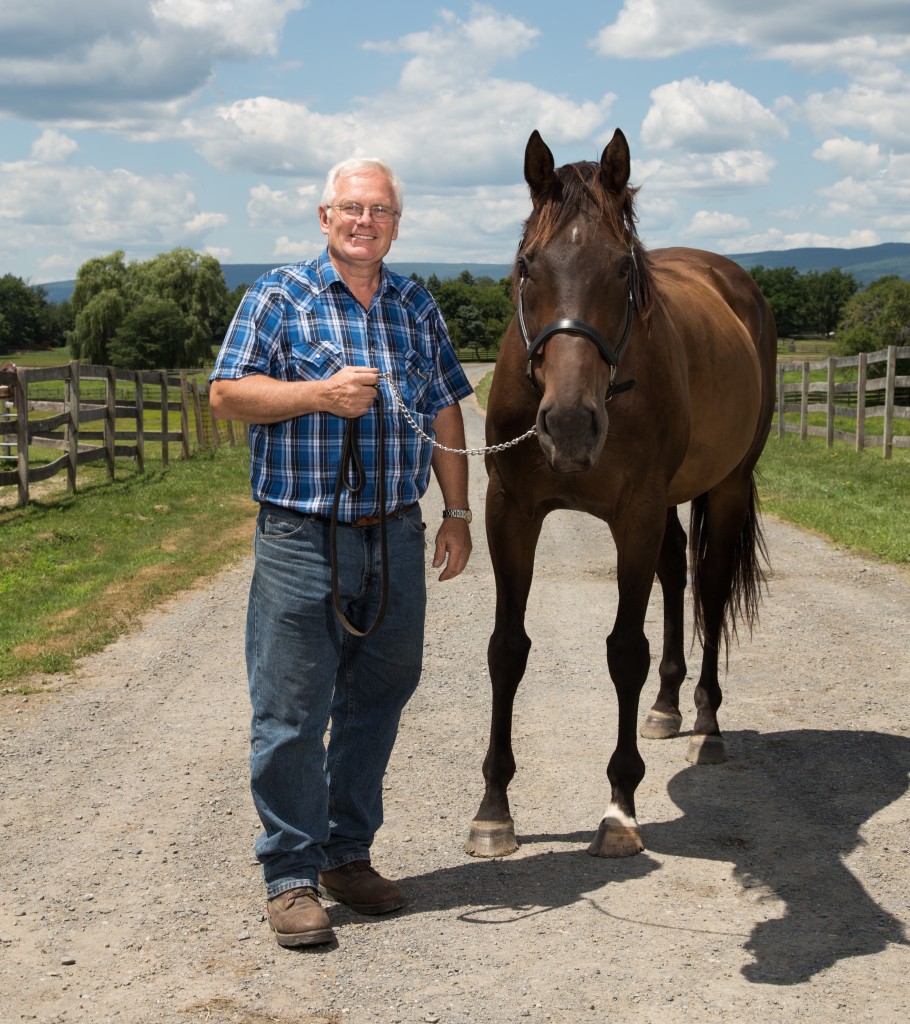
Tremper found his path in life after taking a chance on the TRF’s crazy idea.
So one day Three Fires met a former Army Ranger who served in Vietnam. This was a really tough guy, a real bully. I was in another stall grooming Promised Road, and I heard this muffled cry of help coming from the next stall where Three Fires was. So I walked around the corner, and there’s this inmate, upside down in the bedding, his feet dangling in the corner. And he just looked up at me and said, ‘Three Fires kicked me!’
I asked what he’d been doing, and he admitted he’d been a little tough on him. After that, the inmate was a lot better with the horses.
Q: What’s the best part of being a witness to the horse/inmate interaction?
I think it’s watching how well horses read body language, and how, once these guys get the idea that they can make major changes, beginning with how they carry themselves, it has an influence over their entire lives. The habits they learn here carry over into their lives outside of prison.
I regularly hear from some folks who continue to do well since graduating our program, and getting paroled. They will call back and let me know how they’re doing. It’s a great thing to see how learning to care for our great, retired racehorses has taught these guys to change their lives.


A horse I followed for years, Creme de la Fete, who was the very definition of a hard-knocking claimer at the NYRA tracks in the late 79s-early 80s, was retired to the TRF facility at Walkill.
I had the pleasure to work with Jim and the horses at TRF.
It was a life changing experience that I carry with me to this day.
I am forever in their debt.